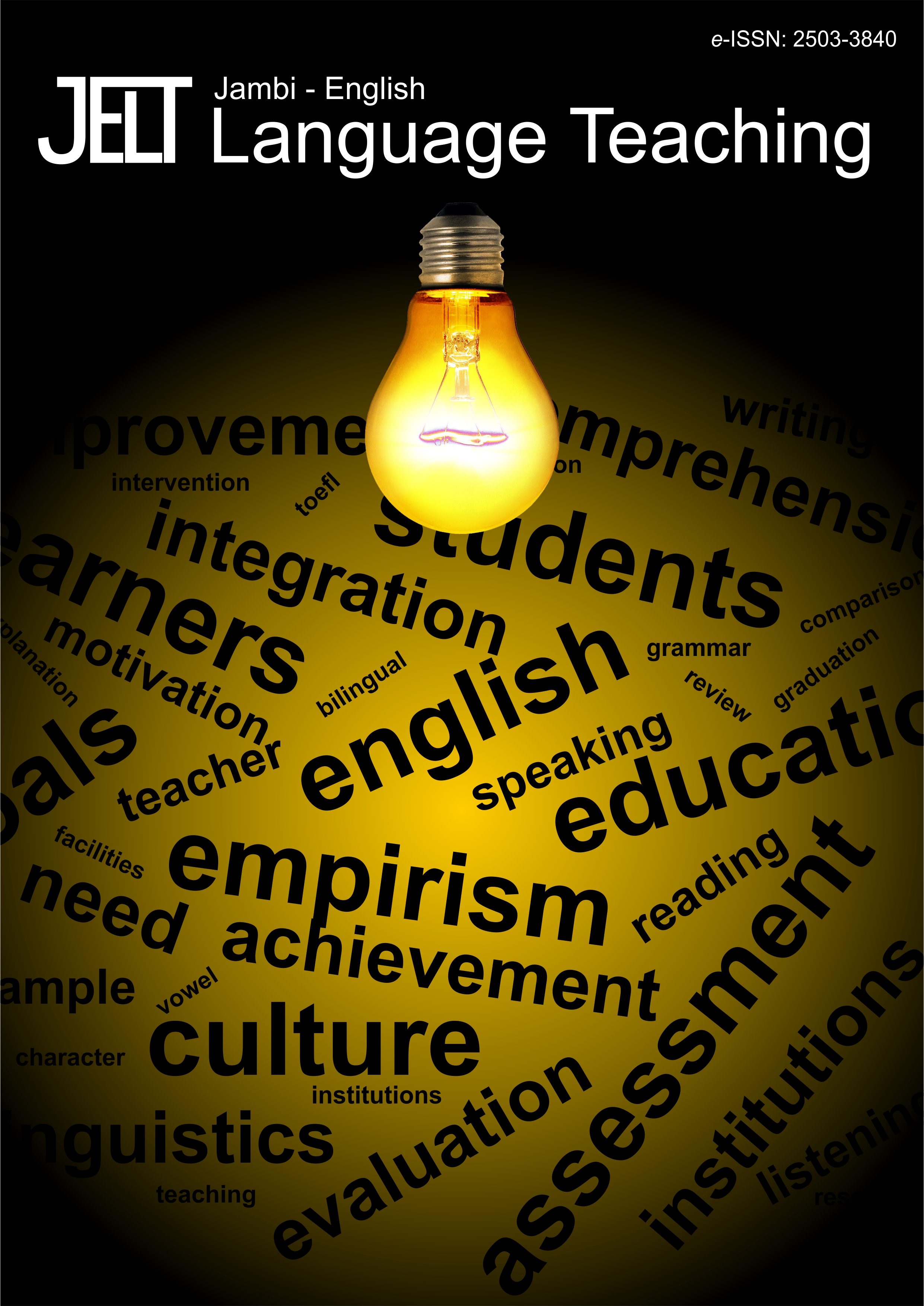TEACHERS' VIEWS ON THE MODEL OF STUDENT'S LANGUAGE PORTFOLIO IN ENGLISH LANGUAGE TEACHING AND LEARNING
Main Article Content
Abstract
The objective of this research is to explore the teachers’ views toward the model of student’s language portfolio in English language teaching and learning. Participants of this research included six lecturers in English Education Study Program at Universitas Jambi who teach language skills and had implemented portfolio in their respective class. A qualitative research design was employed by conducting interview with the participants as the primary data as well as document analysis as the secondary data for this research. The result of this research indicates portfolio is used in English Education Study Program at Universitas Jambi although it is not broadly implemented. The finding shows portfolio is developed according to two distinctive purposes, namely process and product portfolio with the tendency towards process portfolio in its implementation. The participants disclosed that the core components of portfolio include collection of students’ learning artifacts, result of peer review, and reflection which considered crucial to bring about effective record of student’s progress in learning. In it’s practice, portfolio implemented in accordance to project-based class within the purpose to encourage the students to work collaboratively in developing portfolio. Portfolio assessment decision is determined by the implementation of holistic assessment and the use of rubrics. Besides, peer review is employed in the assessment process in order to reduce teachers’ work for providing feedback towards students’ portfolio even though it is not accompanied by any scoring guidelines in its implementation.
Downloads
Article Details

This work is licensed under a Creative Commons Attribution-ShareAlike 4.0 International License.
References
Al-Muslimi, F. A.-E. (2015). The Effect of Using Portfolio on the Development of Students‟ English Business Writing and their Attitudes towards the course at Sana'a Community College. International Journal of Applied Research, 414-423.
Aydin, S. (2010). EFL writers' perceptions of portfolio keeping. ScienceDirect Assessing Writing 15, 194-203.
Brown, H. D., & Abeywickrama, P. (2010). Language Assessment Principles and Classroom Practices (2nd ed.). New York: Pearson Longman.
Charanjit, K., & Swaran, S. (2013). The Use of Portfolio as an Assessment Tool in the Malaysian L2 Classroom. International Journal of English Language Education, 94-108.
Creswell, J. W. (2009). Research Design: Qualitative, Quantitative, and Mixed Methods Approaches (3rd ed.). SAGE Publications.
Davis, M. H., & Ponnamperuma, G. G. (2005). Portfolio Assessment. Journal of Veterinary Medical Education, 279-284.
Demirel, M., & Duman, H. (2015). Use Of Portfolio In English Language Teaching And Its Effects On Achievement And Attitude. Procedia
Dörnyei, Z. (2007). Research Methods in Applied Linguistics. Oxford New York: Oxford University Press.
Fiktorius, T. (2013). Portfolio Assessment in English Language Teaching (ELT). Pontianak.
Gottlieb, M. (1995). Nurturing Student Learning Through Portfolios. TESOL Journal, 12-14.
Heckendorn, R. (2002). Building a Beowulf: Leveraging research and department needs for student enrichment via project based learning. Computer Science Education, 255-273.
Kalra, R., Sundrarajun, C., & Komintarachat, H. (2017, December Using Portfolio as an Alternative Assessment Tool to Enhance Thai EFL Students‟ Writing skill. Arab World English Journal (AWEJ), 8, 292-302.
Karami, S., Sadigh, F., Bagheri, M. S., & Riasati, M. J. (2018). The potential impact of the application of the application of electronic portfolio on Iranian EFL learners' writing performance seeking their gender role. Cogent Social Sciences, 1 - 17.
Thomas, J. W. (2000). An Review of Research on Project-Based Learning.
Uçar, S., & Yazıcı, Y. (2016). The Impact of Portfolios on Enhancing Writing Skills in ESP Classes. International Conference on Teaching and Learning English as an Additional Language, 226-233.

